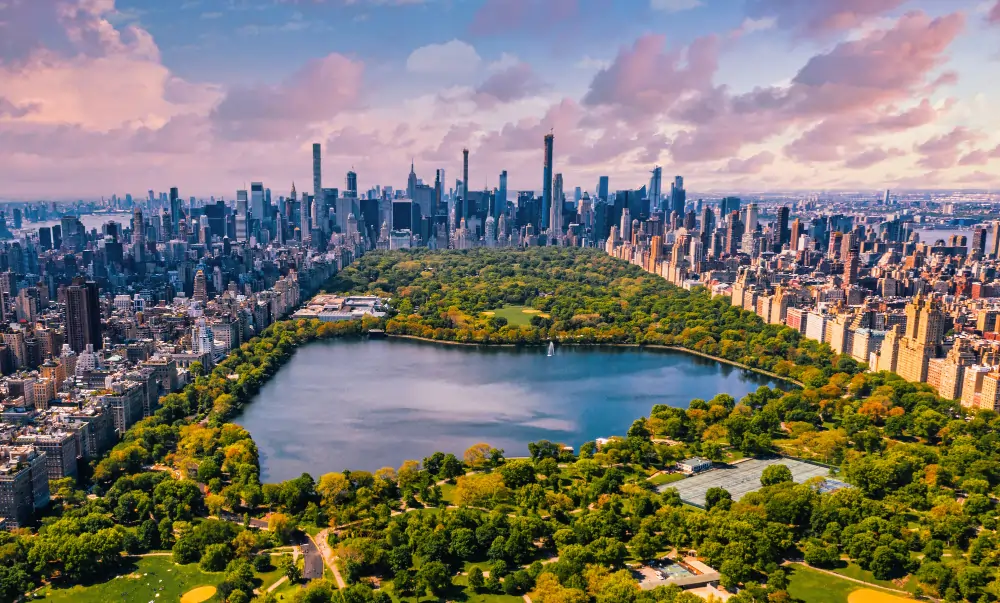New York City has long been a leader in environmental initiatives, but the introduction of the Climate Mobilization Act marks a significant leap forward in the city’s efforts to combat climate change. This groundbreaking legislation is designed to drastically reduce the city’s carbon footprint by enforcing stricter energy efficiency standards across thousands of buildings. At the heart of this initiative is Local Law 97 (LL97 NYC), a cornerstone of the Act that is poised to reshape how buildings in New York City operate and contribute to the environment. As the city strives to meet its ambitious climate goals, understanding the implications of NYC Local Law 97 and how it impacts building owners, residents, and the environment is crucial.
The Climate Mobilization Act: A Quick Overview
The Climate Mobilization Act, passed in April 2019, is a comprehensive package of laws aimed at reducing New York City’s greenhouse gas emissions. The Act is a critical part of New York City’s Green New Deal and focuses on making the city’s building sector—responsible for nearly 70% of its carbon emissions—more sustainable. The goal is to reduce the city’s greenhouse gas emissions by 40% by 2030 and 80% by 2050, compared to 2005 levels.
The Act includes several components, but Local Law 97 (LL97 NYC) is the most impactful for building owners. This law sets stringent carbon emission limits for most buildings over 25,000 square feet, affecting about 50,000 buildings citywide. These buildings must meet specific carbon intensity targets starting in 2024, with increasingly stringent requirements in the following years.
The Role of Local Law 97 in Reducing Carbon Emissions
NYC Local Law 97 is the centerpiece of the Climate Mobilization Act, directly addressing the carbon emissions produced by large buildings in the city. The law targets buildings because they are the largest source of greenhouse gas emissions in New York City. By imposing carbon caps, the law aims to encourage building owners to adopt more sustainable practices, including energy efficiency measures, renewable energy sources, and other innovations to reduce their carbon footprints.
Understanding the Carbon Emission Limits
Under Local Law 97, carbon emission limits are based on a building’s usage type and size. The law defines specific carbon intensity limits (measured in metric tons of CO2e per square foot) that buildings must adhere to. For example, residential buildings, commercial spaces, and industrial properties each have different emission limits tailored to their energy usage patterns.
Starting in 2024, buildings that exceed these limits will face significant fines. These penalties are designed to incentivize building owners to invest in energy-efficient technologies and retrofits. The fines can be steep, calculated based on the amount by which a building exceeds its emission limit. For many building owners, this makes compliance with NYC Local Law 97 not just an environmental imperative but a financial one as well.
Compliance Strategies for Building Owners
Meeting the requirements of LL97 NYC will require many building owners to make substantial changes to their properties. Compliance strategies may include:
- Energy Audits and Retro-Commissioning: Conducting energy audits to identify areas where energy is being wasted and implementing retro-commissioning measures to optimize building systems.
- Upgrading HVAC Systems: Replacing outdated heating, ventilation, and air conditioning systems with more energy-efficient models.
- Lighting Upgrades: Switching to LED lighting and installing smart lighting controls to reduce energy consumption.
- Building Envelope Improvements: Enhancing insulation, upgrading windows, and sealing air leaks to improve energy efficiency.
- On-site Renewable Energy: Installing solar panels or other renewable energy sources to generate clean energy on-site.
- Energy Management Systems: Implementing advanced energy management systems to monitor and control energy usage in real-time.
These strategies are essential not only for meeting the law’s requirements but also for reducing operating costs and improving the overall value of the property.
The Impact of NYC Local Law 97 on New York City’s Carbon Footprint
The ambitious goals set by Local Law 97 are expected to have a profound impact on New York City’s carbon footprint. By targeting the building sector, the law addresses the largest source of emissions in the city, with the potential to reduce greenhouse gas emissions by millions of metric tons annually.
Driving Innovation and Green Jobs
One of the positive side effects of NYC Local Law 97 is the boost it provides to green innovation and the job market. As building owners seek to comply with the law, there is an increased demand for energy-efficient technologies, renewable energy installations, and skilled labor to perform the necessary upgrades. This demand is driving growth in the green economy, creating new jobs in construction, engineering, and environmental consulting.
Encouraging the Use of Renewable Energy
Local Law 97 also encourages the adoption of renewable energy sources. Buildings that generate or purchase renewable energy can receive credits that offset their carbon emissions, making it easier to meet the law’s requirements. This not only helps reduce the city’s reliance on fossil fuels but also supports the growth of the renewable energy sector.
Promoting Equity and Environmental Justice
The law also addresses issues of equity and environmental justice. By focusing on large buildings, which are often owned by wealthy individuals or corporations, the law ensures that those with the greatest capacity to make changes contribute significantly to the city’s climate goals. Additionally, the law includes provisions to ensure that building upgrades do not disproportionately impact low-income tenants, such as rent stabilization protections.
Challenges and Criticisms of Local Law 97
While NYC Local Law 97 is a critical step forward in reducing the city’s carbon footprint, it is not without its challenges and criticisms. Building owners, especially those with older properties, may face significant financial burdens in meeting the law’s requirements. The cost of retrofitting buildings can be substantial, and for some, the timeline may seem too aggressive.
There is also the concern that the law’s penalties could disproportionately affect small property owners or those with limited access to capital. Some critics argue that the city should provide more financial support or incentives to help these owners comply with the law.
Furthermore, there are questions about how the law will be enforced and whether the city has the resources to monitor compliance effectively. Ensuring that all building owners adhere to the requirements of LL97 NYC will be a significant challenge for city officials.
The Future of NYC’s Climate Mobilization Act
As New York City continues to implement the Climate Mobilization Act, the success of Local Law 97 will be closely watched. The law is a bold experiment in urban environmental policy, with the potential to serve as a model for other cities grappling with the challenges of climate change.
The next few years will be critical in determining how effectively NYC Local Law 97 can transform the city’s carbon footprint. As the initial compliance deadlines approach, building owners will need to make significant investments in energy efficiency and carbon reduction measures. The impact of these changes will be felt not only in reduced emissions but also in the creation of a greener, more sustainable urban environment.
Also Read: Real Estate Development
New York’s Premier Sustainability Consulting Experts in Real Estate Owners, Managers, and Developers in Helping them with Energy Use Reduction and Regulatory Compliance.



